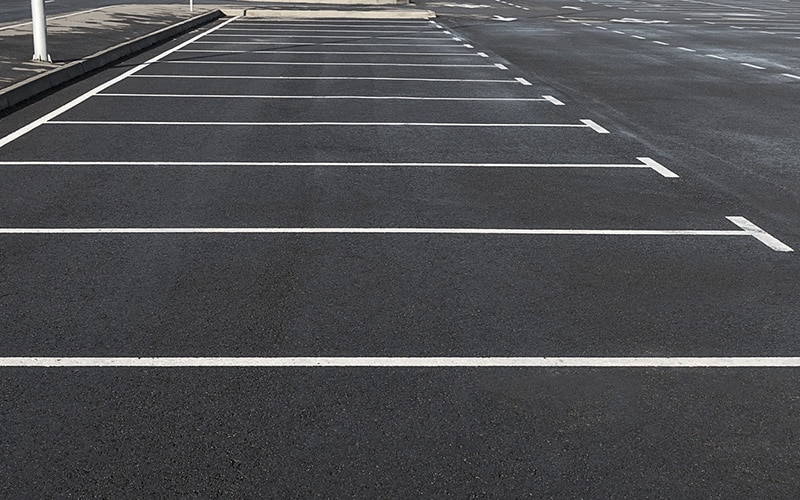Secure Surface Areas with Professional Asphalt Sealing: Cold Mix Basics
Secure Surface Areas with Professional Asphalt Sealing: Cold Mix Basics
Blog Article
Cold Mix Asphalt Vs. Hot Mix Asphalt: Which Is Right for You?

Structure Differences
Cold mix and warm mix asphalts vary considerably in their composition, with distinct qualities that affect their efficiency and applications. Cold mix asphalt is created by emulsifying the asphalt binder with water and an emulsifying agent prior to mixing it with aggregate. This approach permits the asphalt to be convenient at reduced temperature levels, making it excellent for temporary fixings and for use in cooler weather. Warm mix asphalt, on the other hand, is made at heats, usually between 300-350 ° F, which helps to accomplish far better compaction and a much more long lasting final product. The hot mix asphalt production process includes warming the aggregate and asphalt binder independently prior to combining them at the asphalt plant.
Moreover, chilly mix asphalt tends to be less dense and extra flexible than hot mix asphalt. This versatility makes it better fit for locations with greater levels of motion, such as driveways or roadways with rush hour. In contrast, warm mix asphalt is recognized for its high sturdiness and resistance to rutting and fracturing, making it a favored selection for highways and high-traffic roadways where durability is important.
Installment Process Variances
The process of installing cold mix and warm mix asphalt shows remarkable differences in their procedures and needs. In comparison, warm mix asphalt demands an extra sophisticated installment procedure. Due to the heating demands, hot mix asphalt setups are usually carried out by professionals with specific equipment, making certain a much more irreversible and structurally audio result.
Longevity and Long Life Elements
When considering asphalt options, longevity and durability are vital aspects to assess for long-term pavement performance. Hot mix asphalt (HMA) is known for its phenomenal longevity and longevity.
In regards to longevity, HMA normally surpasses CMA due to its exceptional toughness and resistance homes. HMA sidewalks have a longer life span, requiring less frequent repair work and upkeep, which can equate to set you back savings in the future. Furthermore, HMA pavements are much more conveniently customizable to satisfy specific task requirements, even more improving their longevity.
Cost Factors To Consider
Thinking about the economic effects is a critical element when evaluating the selection between warm mix asphalt (HMA) and chilly mix asphalt (CMA) for sidewalk jobs. While the first cost of hot mix asphalt is typically more than that of cool mix asphalt, HMA often offers an extra cost-efficient solution in the future because of its remarkable durability and longevity. HMA is understood for its ability to withstand hefty traffic loads and harsh weather condition conditions, reducing the requirement for constant repair work and maintenance. On the other hand, chilly mix asphalt is much more budget-friendly ahead of time but may call for even more regular patching and resurfacing, weblink resulting in greater maintenance prices in time.
Along with product prices, it's necessary to take into consideration the expenditures connected with installment and upkeep when contrasting HMA and CMA. HMA generally needs specific equipment and proficient labor for proper installation, which can impact total task expenses. Alternatively, CMA is less complicated to function with and can typically be used using less complex methods, possibly reducing installation expenditures. Eventually, the choice in between HMA and CMA must consider not simply the first expense but likewise the lasting monetary implications to figure out the most cost-efficient option for the particular pavement project.
Environmental Influence Comparison
Contrast of the ecological impacts between warm mix asphalt (HMA) and cold mix asphalt (CMA) exposes distinct distinctions in sustainability techniques. HMA production calls for heats, causing increased power usage and greenhouse gas exhausts. The process also releases unstable organic substances (VOCs) and unsafe air contaminants (HAPs) right into the atmosphere. In comparison, CMA is created and applied at lower temperatures, reducing energy usage and exhausts substantially. The lower production temperature levels of CMA cause lowered fuel consumption and lower levels of carbon dioxide exhausts, making it a more environmentally pleasant alternative.
Moreover, the use of CMA often entails reusing existing asphalt pavement, promoting resource conservation and decreasing the quantity of waste sent out to garbage dumps. By opting for CMA over HMA, road building projects can contribute favorably to ecological conservation efforts.
Conclusion
In conclusion, the option between cold mix asphalt (CMA) and warm mix asphalt (HMA) depends upon numerous aspects such as composition, setup procedure, toughness, long life, expense, and ecological influence. asphalt patch repair. While CMA uses a fast and cost-effective option for small repairs, HMA guarantees click this link premium toughness and durability for hefty web traffic areas. Take into consideration these aspects very carefully to determine which type of asphalt is the ideal choice for your paving requires
:max_bytes(150000):strip_icc()/barricade-tape-sealed-driveway-big-56a583145f9b58b7d0dd3d87.jpg)
Thinking about the monetary ramifications is an important facet when evaluating the selection in between warm mix asphalt (HMA) and cool mix asphalt (CMA) for pavement tasks. While the first cost of warm mix asphalt is commonly higher than original site that of cool mix asphalt, HMA commonly provides a more cost-effective service in the long run due to its superior durability and longevity. cold mix asphalt.Comparison of the environmental impacts in between warm mix asphalt (HMA) and cold mix asphalt (CMA) discloses distinct distinctions in sustainability methods.In conclusion, the option between cool mix asphalt (CMA) and warm mix asphalt (HMA) depends on various variables such as composition, setup process, durability, long life, expense, and environmental influence
Report this page